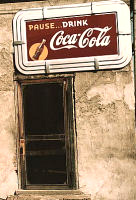America on the Move, Part One: Migrations, Immigrations, and How We Got Here
Students and Smithsonian National Museum of American History curators give a tour of the exhibition "America on the Move," which looks at how immigration and migration impacted American history and at the role of various forms of transportation.
To view this electronic field trip, select "America on the Move, Part One: Migrations, Immigrations, and How We Got Here" under the heading "Electronic Field Trips."


